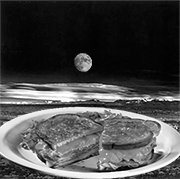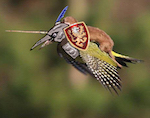|
MrBlandAverage posted:Seriously, reread the image
|
|
|
|

|
| # ? May 15, 2024 15:57 |
|
Nomenclature posted:Wow, it's almost like I was always talking about equivalent FOVs, and allowing the focal length to change in order to match FOVs. The fact that a textbook confirms that an f-stop is exactly what I already said an f-stop is changes nothing. nah, you're still an idiot. But I guess all those people using the same aperture/iso/shutter speed settings on their mirrorless camera and MF camera at the same time are just wrong as poo poo and have no idea what they're doing. or you don't actually understand how cameras and the relationship between aperture/iso/shutter speed works, I wonder which it is. Maybe you should be reading understanding exposure instead of hecht? I mean how the hell do you think a light meter could possible work without telling it the size of your sensor? Now this might be a bit advanced for you, but this is a gossen digisix, a fairly common light meter. It takes a light reading (in the picture it's 6 EV ) based on your ISO setting that you tell it. Based on that, you spin the dial until the little number in the window matches the measured value, and then the dial tells you all the different exposure lengths and aperture combinations that will make the same exposure.  Now please, please explain to me how this wonderful tool is wrong because hey, it doesn't ask me what sensor size I'm shooting with, so it must be lying or something! I mean, according to you portra 400 in 35mm is somehow different from the portra 400 on a roll of 120! So please, explain to everyone in this thread about how everything they knew is wrong and that aps-c sensors are actually boosting the signal in the background to compensate for their physics defying lenses. And then explain to everyone why the film industry was lying to use for the past 100 years! and then e. while you're at it feel free to explain how the earth is flat and why we should all switch to timecubes Dr. Despair fucked around with this message at 20:41 on Feb 16, 2016 |
|
|
|
Dren posted:just gonna quote the only part of this post that is correct broken clock, etc
|
|
|
|
Nomenclature posted:Again, if you think that you have some information that invalidates something that I have said, explain it using math and falsifiable statements. Here you go: 
|
|
|
|
Mr. Despair posted:Now this might be a bit advanced for you, but this is a gossen digisix, a fairly common light meter. It takes a light reading (in the picture it's 6 EV ) based on your ISO setting that you tell it. Based on that, you spin the dial until the little number in the window matches the measured value, and then the dial tells you all the different exposure lengths and aperture combinations that will make the same exposure. ^That is the part of the textbook that you need to understand, but I don't think you do. Your f-stop gives you the intensity per unit area of the light. Your light meter gives you a reading of that intensity. Now, if I place light of that intensity over a large area, and I divide that area into buckets that catch the light, I will catch a certain amount of light per bucket. Now, if I place light of that intensity over a smaller area, but keep the same number of buckets, each bucket must be smaller and will therefore catch less light. If the former was a FF sensor and the latter was an APS-C sensor, you can see that each "bucket," or "pixel" will receive less light at the same intensity. Thus, either the sensor or the image processor must amplify the signal more. Now are you getting it?
|
|
|
|
Please apply that to film and grain. /e- The inefficiency of pixels does not change physics. Submarine Sandpaper fucked around with this message at 20:57 on Feb 16, 2016 |
|
|
|
|
Wow. Seriously, wow. Buckets? I think you have a fundamental misunderstanding of how this works.
|
|
|
|
Nomenclature posted:“The flux density at the image plane varies as (D/f)^2.” Intensity is expressed per unit area. You're real dumb.
|
|
|
|
Oh boy there are a lot of posts in the Canon thread today, let's have a loo- oh, oh dear
|
|
|
|
MrBlandAverage posted:This thread is real dumb.
|
|
|
|
I want to take my photography to the next level, but I feel like there is a lot I don't understand. Can anyone recommend a school for pursuing a masters in physics? Should I lean more towards applied physics or engineering physics?
|
|
|
|
Oh dear god, what have I done?
|
|
|
|
Mods rename Nomenclature to Dunning-Kruger Effect in Action, TIA
|
|
|
|
This conversation has me carrying all my Canon gear out to the dumpster and tossing it. It's Nikon from here on out.
|
|
|
|
I'm also going to be selling my Canon gear, though it's not just because of the other Canon users in this thread! 
|
|
|
|
xzzy posted:This conversation has me carrying all my Canon gear out to the dumpster and tossing it. It's Nikon from here on out. Good luck finding intelligent life there either " Will you always remember where you were when D500 announced. 3 days ago Welcome all I was sitting down at home,just as well,when my wife announces,so and so has told me on facebook that Nikon have released a D500.....I had logged on almost every day since 2010 to find it.It wasnt the way I expected to hear it,disappointing but great. Interested to hear your situations. Regards Roger. " D500 - The JFK assassination of a new generation
|
|
|
|
Nomenclature posted:Seriously, read before posting, ok?
|
|
|
|
Mr. Despair posted:Holy poo poo the discussion on this page is stupid, even for the canon thread. I'm happy that even though I'm pretty dumb I can understand this clearly.
|
|
|
|
Nomenclature keeps (by accident) explaining how the Speedbooster works, but is missing the part where sensor size does not change the image circle of a lens. I know everyone here understands this, I just had to get this post out of my system.
|
|
|
|
MrBlandAverage posted:Intensity is expressed per unit area. You're real dumb. BTW, this isn’t directly exposure triangle stuff – this is lower level than that. This is image sensor and lens layout level crap. And I am sure that I am going to use a term inappropriately here and there – if that genuinely causes confusion, let me know. So, I am going to start by making a bunch of statements, and if you disagree with any of them, just say which one and provide information to support that. Then I’ll combine them in an example to demonstrate what I have been trying to say. 1.) Light intensity on the sensor (illuminance) is a function of the light source (which I will assume is constant, like a perfect white wall with even reflectivity) and f-stop. 2.) Light intensity on the sensor for a given FOV and f-stop is constant regardless of whether the sensor is FF, APS-C, 1”, etc. 3.) Light intensity represents the number of photons per unit area. 4.) The larger the sensor that light falls on with a given intensity, the more total photons the sensor will collect. 5.) The total number of photons collected by a pixel on a sensor is given by the total number of photons hitting the sensor (intensity times surface area) divided by the portion of the sensor taken up by that pixel. 6.) Let’s say that I have a sensor (size doesn’t matter) and I have exposed it such that each pixel receives 100 photons. Now, I cut each pixel in half, and with the same exposure conditions, each pixel now receives half the number of photons (50). 6a.) Say I have a 20MP full frame sensor. I have a light source and lensing setup that sends light to the sensor such that each pixel receives 1,000 photons (let’s say at 100mm and 1/60th – it’s arbitrary and doesn’t matter; this is just to appease people who keep trying to inappropriately bring the exposure triangle back into this). My image processor defines this level of CMOS excitation as matching ISO 100 sensitivity for the intensity of light falling on it (not a clear sentence, I know, but I am tired). 6b.) Now, I have a 40MP FF sensor. I expose it the same as before. Because each pixel is half the area of the pixels in 6a., each pixel now receives 500 photons. But wait, the intensity of the light is the same, so the exposure must be the same too. Thus, I have to boost the signal at each pixel in order to keep the 40MP exposure the same as my 20MP exposure. In other words, one of two things has to happen: Option 1: For every electron that 1 photon caused the 20MP pixel to send, each photon has to cause the 40MP pixel to send 2 electrons in order to fill its part of the exposure triangle and match the ISO 100 sensitivity standard. (Boost at the pixel level*) Option 2: The image processor for the 40MP sensor requires half the number of electrons from a pixel than the 20MP sensor’s image processor requires from its pixels in order to match the ISO 100 standard. (Boost at the image processor level*) *Yes, the image processor can “know” what area is covered by its pixels and use that current*known area math to figure out what illuminance the sensor is getting at that pixel, but each smaller pixel will still have a lower SNR, and noise is why I brought sensor/pixel size up in the first place. 7.) If I have a FF sensor and an APS-C sensor each receiving the same intensity of light, the APS-C sensor, being 43% the area of the FF sensor, will receive 43% of the total number of photons that the FF sensor receives with that exposure. 8.) If my FF and APS-C sensors each have the same number of pixels, each pixel will collect the same percentage of the total photons that fall on the sensor. 9.) If I expose a 20MP FF and a 20MP APS-C sensor to an illuminance as in 6a., each FF pixel will receive 1,000 photons, while each APS-C pixel will receive 430 photons. 9a.) If every photon that hits a FF pixel in 9. excites the CMOS to send the image processor X number of electrons, then every photon that hits an APS-C pixel in 9. will also cause X number of electrons to be sent. (Assume no pixel-level boosting here – this is, of course, the Canon thread, and we don’t need no stinkin’ dynamic range!) 9b.) Thus when exposed to the same illuminance (FOV and f-stop from the same scene/white wall), each pixel on the APS-C sensor will send the image processor 43% the number of electrons that each FF pixel will send. The image processor will have to compensate for this reduced total light per pixel/reduced total electrons per pixel by boosting the signal from the pixels, introducing noise. Ok, still with me? Are we in agreement that light intensity is independent of the total area that we use to sample that illuminance? If we have a FF sensor, an APS-C sensor, and a 1” sensor, and give them all the same FOV and f-stop, they will all be receiving the same intensity of light. Agreed? So, let’s say I am a sensor manufacturer. I design a FF sensor with 20 million pixels, so each pixel is 0.043^2 microns in area (Pixel Mk 1). Let’s say that with an arbitrary f-stop (light intensity) and exposure time, each Pixel Mk 1 will receive 1,000 photons. I also want to design an APS-C sensor and a 1” sensor that also use Pixel Mk 1. Once I have done that, I have an 8.6 megapixel APS-C sensor with the same light sensitivity as my FF sensor, and a 2.7 megapixel 1” sensor. So, I take them to marketing, proud of having made crop sensors with the same light sensitivity as full-frame. I would get told “No one wants to buy 8.6 and 2.7 megapixel sensors! Go give all of them 20MP!” So, I go back and design Pixel Mk2 for my APS-C sensor, which has an area of 0.0185^2 microns per pixel, and Pixel Mk3 for my 1” sensor, which has an area of 0.0058^2 microns per pixel. I then expose all of them with the same conditions that I mentioned before. Each Pixel Mk1 on my FF sensor receives 1,000 photons. Each Pixel Mk 2 on my APS-C sensor receives 430 photons, and each Pixel Mk 3 on my 1” sensor receives 135 photons. Remember that each sensor is receiving the same intensity of light. But because the APS-C and 1” sensors’ pixels are smaller than the FF sensor’s pixels, they take in less light when the total sensor is exposed to a given illuminance. But, I need them all to be showing the same exposure. I have two ways that I could do this. The first is that I could boost the smaller sensors (such that the APS-C sensor reads 430 photons the same as the FF sensor reads 1,000 photons, and the same for 135 photons on my 1” sensor). The second is that I could build lenses that capture the same amount of light, but lens it down to smaller areas to match the smaller sensors (thus increasing the intensity of the light on the sensors). But wait, if according to that textbook, the f-stop defines the intensity of the light, wouldn’t changing the intensity of the light on the sensor while keeping the FOV change the f-stop? Let’s do some math. My original FF exposure was at [arbitrary simple to work with values here: 100mm and f/8, for a 12.5mm aperture diameter and 156.25mm^2 aperture area] and it delivered an intensity of 1,000 photons per 0.043^2 microns. To match the FOV, I need focal lengths of 66.7mm and 37mm for the APS-C and 1” lenses, respectively. Aperture diameter for those lenses will be 8.3mm and 4.6mm, with aperture areas of 69.4mm^2 and 21.4mm^2, in order to place the same intensity of light on the sensor as the FF sensor gets (i.e., to be at f/8). So, in order to place as much light on each pixel as the FF sensor receives at our selected FOV (increasing the intensity), we need to increase the total light on the sensor. We can’t change the focal length without changing the FOV, so we have to change the aperture. If we open the APS-C aperture up to 12.5mm, we will increase the intensity of the light on the sensor by 2.25 times, meaning that each pixel now captures ~1,000 photons. But the f-stop has now become 66.7mm/12.5mm = f/5.3, And if we open the 1” aperture up to 12.5mm, we will increase the intensity of the light on the sensor by 7.3 times, meaning that each pixel now captures ~1,000 photons, but the f-stop has now become 37mm/12.5mm = ~f/3. TL/DR: If you have smaller pixels, you need to have a higher intensity of light to excite them to a given level than larger pixels need. Even if they are on different sized sensors, you will need to change the f-stop to do that. If you want to keep the f-stop the same, then you will need to accept that each pixel will get less light, and boost the sensitivity of each pixel to compensate. Also, I hate you all. Goodnight.
|
|
|
|
congratulations on postulating the concept of signal to noise ratio.
|
|
|
|
Nomenclature posted:I meant to type “intensity (light per unit area)” instead of “intensity per unit area.” That was my mistake, rushing to type this out on a day when I teach multiple classes. Anyway, now I have time to write more. Hello! Have you considered posting on my forums at http://www.fredmiranda.com/forum/ ? You'd fit right in! Come on over.
|
|
|
|
Nomenclature posted:Also, I hate you all. Goodnight. How much hate per unit length are we talking about? Is this measurable?
|
|
|
|
God that is a lotta words I'm never gonna read.
|
|
|
|
So how about those 80D specs
|
|
|
|
speedbooster etc tirade posted:If you start the camera with the shutter button already pressed, it is only a half-press.
|
|
|
|
A sciencey science guy posted:
I mean sure, this isn't Nature or anything, but you started by putting your credentials out as a scientist and then say things like this.
|
|
|
|
Scientists are allowed to be wrong, it's part of the job and is why they peer review stuff. Of course that requires the ability to shut up and self reflect a little bit but one thing at a time.
|
|
|
|
Isn't a speedbooster just an inverse extender? So you trade focal length for aperture in both cases, just in different directions?
|
|
|
|
bolind posted:Isn't a speedbooster just an inverse extender? So you trade focal length for aperture in both cases, just in different directions? Yes. They both alter the focal length without altering the size of the entrance pupil , so the f ratio changes.
|
|
|
|
Nomenclature posted:blah blah blah tl;dr
|
|
|
|
astr0man posted:So how about those 80D specs Are they really using the same sensor as in the 750/760D? The AF looks good but overall it seems to be a bit uninspired, especially when you compare it to the 760D.
|
|
|
|
Popelmon posted:Are they really using the same sensor as in the 750/760D? The AF looks good but overall it seems to be a bit uninspired, especially when you compare it to the 760D. I don't think so #1 it's a DPAF sensor, where the 750/760/M3 is not. #2 the leaked specs say "new miniaturization process" which could be inferred to mean an on-chip ADC
|
|
|
|
astr0man posted:So how about those 80D specs 80D existing means the 70D is gonna get cheap. Yay!
|
|
|
|
um excuse me posted:Oh boy there are a lot of posts in the Canon thread today, let's have a loo- oh, oh dear
|
|
|
|
timrenzi574 posted:I don't think so On chip ADC is cool. Canon's fear of making the video in their cameras any good is lame. But they'd probably hate to have a DSLR come out with higher res video than the C100 mk2, for 1/5 the price. If the sensor is good I might consider replacing my 60D with this down the line (if a 7D mk3 doesn't show up), considering that I built most of my lens collection around Canon APS-C. But then again, I'd also love to move to mirrorless and not haul around a DSLR anymore, but retain Canon's colour science and system. Here's hoping they come out with a properly thought out mirrorless system (they won't.)
|
|
|
|
Hello I am in Paris for 3 days -- I took the channel tunnel from England and will head back there to London on Saturday the 20th. I checked my large Tamrac explorer at the London hotel's bell services because I only use it when traveling on plane flights, then I transfer my gear into a small Lowe pro bag while taking photos. Well I totally screwed up I am staying about five minutes walking away from the Louvre. Anyone know of a store that would allow me to charge a battery nearby or any Goons that I can trade a battery for one that's charged? This once-in-a-lifetime trip and I'm only going to be able to take a few more photos.
|
|
|
|
Helen Highwater posted:I mean sure, this isn't Nature or anything, but you started by putting your credentials out as a scientist and then say things like this. But enough of that derail.
|
|
|
|
Djimi posted:Hello I am in Paris for 3 days -- I took the channel tunnel from England and will head back there to London on Saturday the 20th. I checked my large Tamrac explorer at the London hotel's bell services because I only use it when traveling on plane flights, then I transfer my gear into a small Lowe pro bag while taking photos. Well I totally screwed up Can't you just google for a photo store nearby? The could probably help you (for a few bucks). Or at least they could sell you a new charger.
|
|
|
|

|
| # ? May 15, 2024 15:57 |
|
Popelmon posted:Can't you just google for a photo store nearby? The could probably help you (for a few bucks). Or at least they could sell you a new charger. By dint of the fact that I'm posting on an Internet forum, yes I can use google to find a store. I also own two of those chargers already. (I have the Mark II as well). And I don't a third for an ungodly sum. Sorry you didn't understand my post. Merci
|
|
|

































